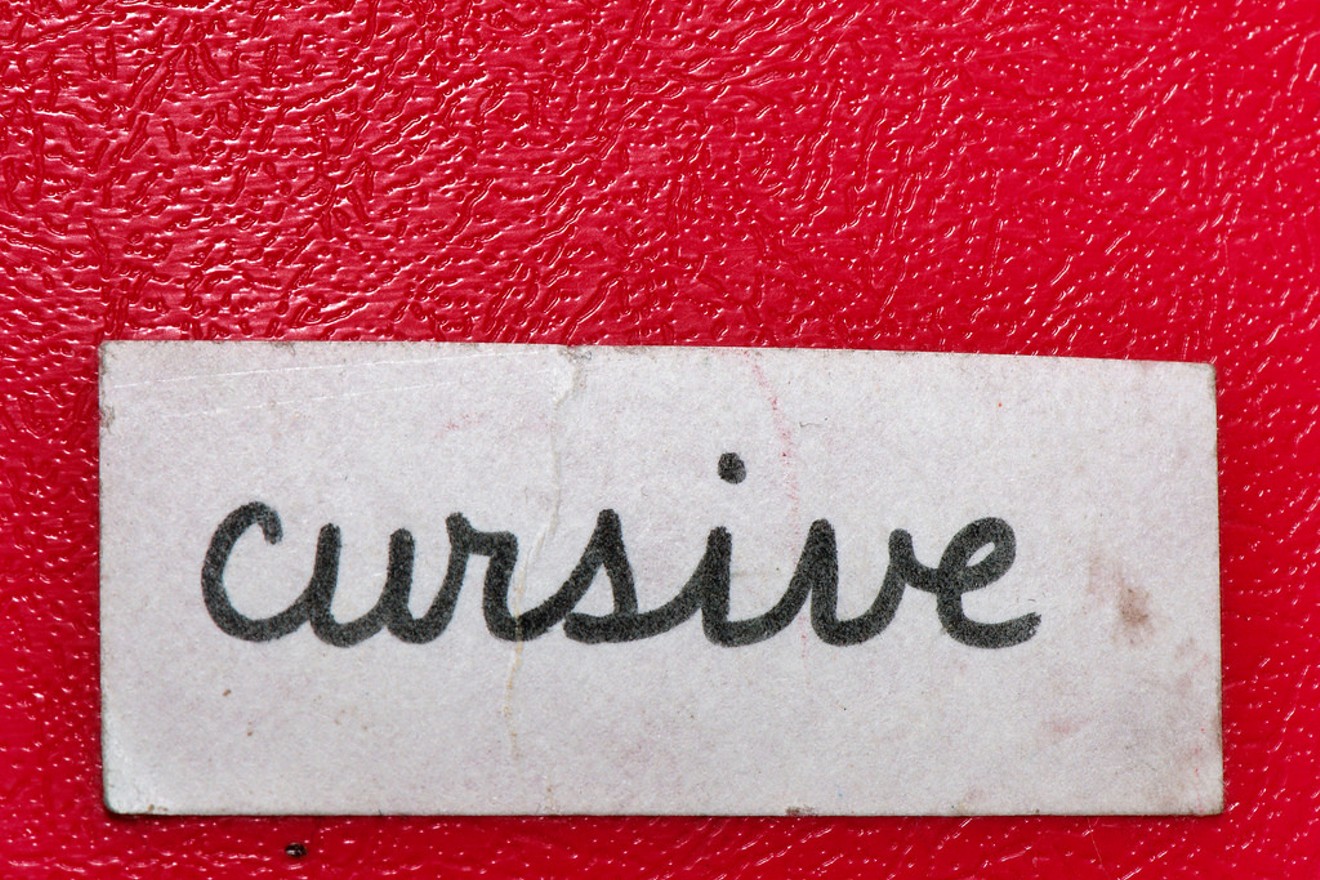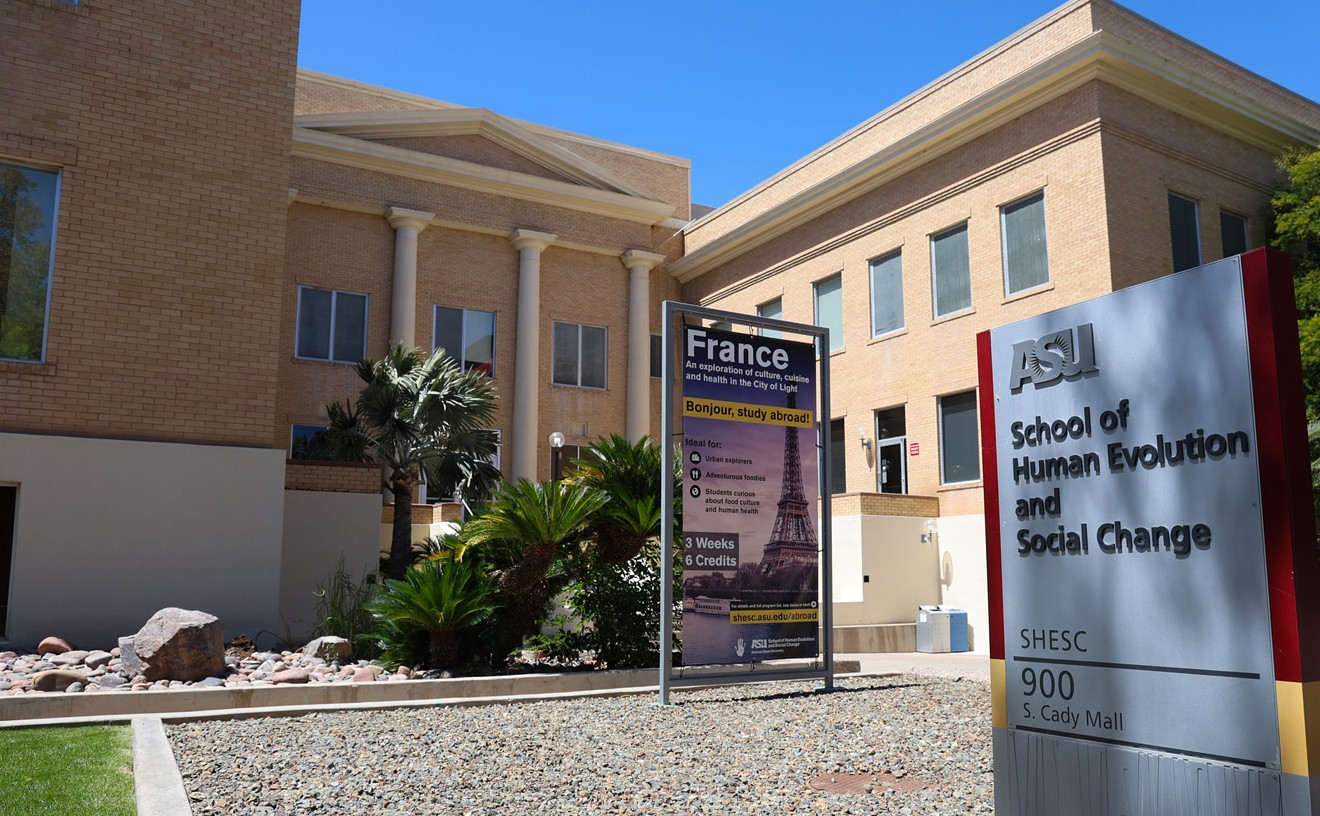The glimmer of good hope in our future may seem small and dim, but it’s there — even if it’s petite and appeals mostly to stuffy old fogeys like myself: Cursive writing is making a comeback.
A new set of Common Core education standards, just this month approved by the state Board of Education, will reinstate cursive writing as a grade-school requirement. These new K-12 prerequisites, known as Arizona College and Career Ready Standards, take effect in Fall 2018.
Cursive began fading away in the late 20th century, after it was determined in various studies that more college students were taking notes on tablets and laptops than with pen and paper. By September 2012, Arizona schools (and those in 45 other states) had adopted the new Common Core standards, and cursive writing went the way of the skate key. Keyboarding, not curlicues, were what kids needed to function in the tech-dominated 21st century.
I’m not saying we should return to writing English round hand with a feather-quill pen dipped in iron-gall ink. (Who wants to keep track of all those nibs?) My glee over the reinstatement of cursive writing isn’t sentimental. Unlike many pro-cursive advocates, my interest is about something more than making sure youngsters can properly form an uppercase Q. And I won’t argue for the importance of handwritten thank-you notes to Grandma, who’s just as likely to be using e-mail and Skype as her grandchild.
I understand the argument for discarding cursive, too. With limited instruction time and the onus of standardized testing, educators have to make choices, and once-traditional skills are being abandoned in favor of tech teaching. I won’t argue, as some have, that taking away cursive will leave history students unable to read historic documents like the Constitution. Come on. Has no one heard of transcription? There are apps that will translate the oldest chicken-scratchings into a tidy text document.
But I will argue for the value of brain activity. A 2011 study by researchers at Indiana University showed that kids who learned and wrote in cursive demonstrated brain activity similar to that of adults, which can’t be a bad thing. And I’ll point out that dumping cursive from the curriculum will expand the divide between students of different socioeconomic standings. Kids who can’t afford home computers and don’t know how to write in longhand will be limited in their ability to communicate, in the workplace and at home.
Mostly, though, there’s the intimacy of handwriting that makes it worthwhile, that helps shape a child’s personality. Even out of the long-retired Palmer method, which taught the same shapes and pen strokes, kids cultivated distinctive, expressive penmanship. Handwriting was, and remains, a sign of cultivation. The way an 11-year-old makes a lowercase Z can say a lot about who he is, and — if he’s not interested in studying any form of visual art — may be the only artistic expression we see from him. I say, “Welcome back, cursive.”
[
{
"name": "Air - MediumRectangle - Inline Content - Mobile Display Size",
"component": "18478561",
"insertPoint": "2",
"requiredCountToDisplay": "2",
"watchElement": ".fdn-content-body",
"astAdList": [
{
"adType": "rectangle",
"displayTargets": "mobile"
}
]
},{
"name": "Editor Picks",
"component": "16759093",
"insertPoint": "4",
"requiredCountToDisplay": "1",
"watchElement": ".fdn-content-body",
"astAdList": [
{
"adType": "rectangle",
"displayTargets": "desktop|tablet"
},{
"adType": "rectangle",
"displayTargets": "desktop|tablet|mobile"
}
]
},{
"name": "Inline Links",
"component": "17980324",
"insertPoint": "8th",
"startingPoint": 8,
"requiredCountToDisplay": "7",
"maxInsertions": 25
},{
"name": "Air - MediumRectangle - Combo - Inline Content",
"component": "16759092",
"insertPoint": "8th",
"startingPoint": 8,
"requiredCountToDisplay": "7",
"maxInsertions": 25,
"watchElement": ".fdn-content-body",
"astAdList": [
{
"adType": "rectangle",
"displayTargets": "desktop|tablet"
},{
"adType": "rectangle",
"displayTargets": "desktop|tablet|mobile"
}
]
},{
"name": "Inline Links",
"component": "17980324",
"insertPoint": "8th",
"startingPoint": 12,
"requiredCountToDisplay": "11",
"maxInsertions": 24
},{
"name": "Air - Leaderboard Tower - Combo - Inline Content",
"component": "16759094",
"insertPoint": "8th",
"startingPoint": 12,
"requiredCountToDisplay": "11",
"maxInsertions": 24,
"watchElement": ".fdn-content-body",
"astAdList": [
{
"adType": "leaderboardInlineContent",
"displayTargets": "desktop|tablet"
},{
"adType": "tower",
"displayTargets": "mobile"
}
]
}
]











